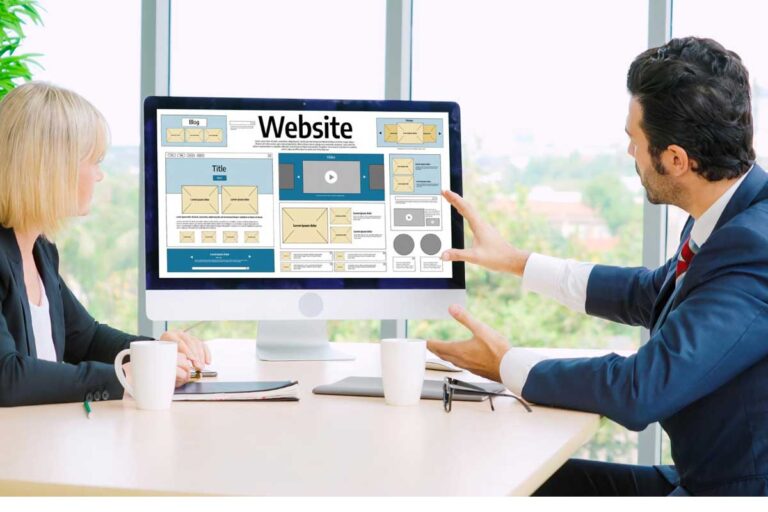In today’s rapidly evolving business environment, companies are increasingly relying on technology to drive growth, streamline operations, and gain a competitive edge. However, there is often a disconnect between what the IT department delivers and what the business needs.
Aligning IT objectives with business goals is essential to ensure that technology not only supports but also drives the strategic direction of the company. One powerful tool to help achieve this alignment is Vendor Management Software (VMS).
By optimizing how companies interact with their vendors, VMS plays a crucial role in helping IT departments empower the technology area while delivering value to the business.
The Importance of Aligning IT with Business Goals
For many organizations, the technology area has evolved from a back-office function to a core element of business strategy. Technology is now critical to achieving operational efficiency, innovation, and customer satisfaction. However, misalignment between IT objectives and business goals can lead to wasted resources, missed opportunities, and inefficiencies.
When IT objectives are not aligned with the overall business strategy, it can result in technology investments that do not contribute to business growth or operational improvements. Projects might run over budget, fail to meet user needs, or lack the agility to adapt to changing market conditions.
On the other hand, when IT objectives are tightly integrated with business goals, technology becomes an enabler of success. IT departments are better equipped to deliver solutions that directly impact revenue growth, cost reduction, and customer satisfaction.
The Role of Vendor Management Software in IT-Business Alignment

Vendor Management Software is a critical tool for aligning IT objectives with business goals. Many IT departments rely heavily on third-party vendors to deliver services, software, hardware, and infrastructure that are critical to their operations. Managing these vendor relationships effectively is essential to ensure that the technology supplied aligns with the strategic objectives of the business.
Vendor Management Software centralizes vendor data, streamlines contract management, and provides real-time visibility into vendor performance. By using VMS, IT departments can better manage their vendor relationships and ensure that their technology investments are delivering the intended value to the organization. Here’s how Vendor Management Software helps in aligning IT with business goals:
1. Enhanced Visibility into Vendor Performance
Vendor Management Software provides a centralized platform for tracking and monitoring vendor performance. IT departments can set key performance indicators (KPIs) that align with business goals, such as uptime, service quality, and cost efficiency. With real-time data on vendor performance, IT leaders can make informed decisions about which vendors are contributing to the organization’s success and which are underperforming.
For example, if a company’s business goal is to improve customer satisfaction through faster response times, IT can use Vendor Management Software to track how well their software-as-a-service (SaaS) providers are meeting performance targets. If a vendor consistently fails to meet agreed-upon service levels, IT can proactively address the issue or switch to a vendor that is better aligned with the company’s customer service goals.
2. Improved Cost Control and Budget Management
One of the major challenges for IT departments is managing the cost of technology investments while ensuring that they deliver value to the business. Without proper oversight, vendor contracts can lead to hidden costs, overcharges, or inefficiencies that drain resources. Vendor Management Software enables IT departments to track all vendor-related costs, identify opportunities for savings, and ensure that contracts are aligned with business objectives.
Through detailed reporting and cost tracking features, Vendor Management Software helps IT departments avoid budget overruns by monitoring spending in real time. This allows IT leaders to make adjustments to vendor contracts or services before costs spiral out of control. Additionally, the software can help identify opportunities for negotiating better terms or consolidating vendors to achieve cost savings, ensuring that technology investments contribute to the bottom line.
3. Risk Management and Compliance

With the increasing reliance on third-party vendors, businesses are exposed to a range of risks, including operational disruptions, security breaches, and regulatory compliance issues. Managing these risks is essential to protecting the organization’s reputation and ensuring business continuity. Vendor Management Software provides tools for assessing vendor risks, monitoring compliance with legal and regulatory requirements, and tracking the security posture of technology providers.
By using Vendor Management Software, IT departments can ensure that all vendors comply with industry standards and internal policies. For example, if a business operates in a highly regulated industry like healthcare or finance, Vendor Management Software can track compliance with data protection laws such as GDPR or HIPAA. This reduces the risk of costly fines or reputational damage due to vendor non-compliance, while also aligning IT risk management efforts with broader business goals.
4. Strategic Vendor Selection
Selecting the right technology vendors is critical to ensuring that IT investments support business goals. Vendor Management Software helps IT departments evaluate vendors based on criteria that are aligned with the organization’s strategic objectives. These criteria might include technical capabilities, financial stability, industry expertise, or innovation potential.
VMS also facilitates a more structured and data-driven approach to vendor selection. By analyzing historical performance data, contract terms, and pricing models, IT departments can make informed decisions about which vendors are best suited to meet the company’s long-term objectives. This ensures that technology partnerships are aligned with both the current and future needs of the business.
5. Streamlined Contract Management
Managing vendor contracts manually can lead to inefficiencies and missed opportunities. Vendor Management Software automates the contract management process, ensuring that all vendor agreements are up to date, properly negotiated, and aligned with business goals. The software provides automated alerts for contract renewals, helping IT departments avoid costly automatic renewals or missed opportunities for renegotiation.
By streamlining contract management, Vendor Management Software ensures that IT departments have full control over vendor relationships. This not only reduces administrative overhead but also ensures that all contracts are aligned with the organization’s broader strategic objectives. For example, if a company’s goal is to reduce costs, IT can use Vendor Management Software to track contract terms and negotiate more favorable pricing or service terms during renewals.
6. Improved Collaboration Between IT and Business Leaders

Finally, Vendor Management Software fosters better communication and collaboration between IT departments and business leaders. By providing a centralized platform for tracking vendor performance, costs, and risks, VMS enables IT leaders to share valuable insights with other departments, including finance, procurement, and legal. This collaboration ensures that technology investments are fully aligned with the broader goals of the organization.
For example, if the business aims to launch a new digital product, IT can use Vendor Management Software to ensure that the necessary technology vendors are delivering on time and within budget. This level of collaboration ensures that IT is seen as a strategic partner rather than a support function.
When Vendor Management Software is fully integrated into the IT department’s operations, it becomes a critical tool for driving continuous improvement and ensuring that technology investments consistently align with business goals. This transformation allows IT to not only meet current business needs but also anticipate future challenges and opportunities, creating a proactive approach to vendor management that supports the company’s long-term strategic objectives.
7. Data-Driven Decision Making
One of the most significant advantages of using Vendor Management Software is the ability to leverage real-time data for decision-making. With all vendor-related information centralized in one platform, IT leaders can access performance metrics, financial reports, compliance records, and risk assessments at any time. This access to data ensures that IT can make informed, timely decisions that align with the company’s overall business strategy.
For instance, if the business is looking to scale its operations or enter new markets, the IT department can use data from the Vendor Management Software to evaluate which technology vendors have the capacity to support such growth. By analyzing vendor performance history and service delivery records, IT leaders can determine which vendors are best suited to handle increased demand without compromising on service quality or cost efficiency.
Additionally, having this data readily available allows IT to respond quickly to any issues that arise, such as performance dips or contract non-compliance. Real-time alerts provided by Vendor Management Software enable IT to address problems before they escalate, minimizing disruption to business operations and maintaining the alignment between IT goals and business needs.
8. Optimizing Vendor Relationships for Long-Term Success
Successful vendor management is not just about short-term gains but about building long-term, strategic partnerships that add value to the business. Vendor Management Software enables IT departments to cultivate strong relationships with their vendors by fostering transparency, accountability, and collaboration. These relationships are crucial for ensuring that vendors are not just meeting the minimum contract requirements but are also contributing to the organization’s innovation and growth.
With Vendor Management Software, IT can easily track how vendors are performing against service level agreements (SLAs) and key performance indicators (KPIs). Regular performance reviews supported by data help identify areas where vendors excel and where improvements are needed. This level of transparency encourages open communication between IT and its vendors, leading to more productive collaborations that drive mutual success.
Furthermore, as business needs evolve, IT departments can work with vendors to adapt and innovate. Vendor Management Software provides the framework for this collaboration by offering shared platforms where vendors and IT teams can exchange ideas, manage joint projects, and track progress. This strategic collaboration ensures that vendors are not just fulfilling orders but are actively contributing to the company’s future success.
9. Facilitating Agility and Scalability

As businesses grow, their technology needs evolve, often requiring them to scale up quickly or pivot to new strategies. Vendor Management Software equips IT departments with the flexibility needed to manage these changes efficiently. Whether it’s onboarding new vendors, adjusting existing contracts, or scaling services to meet increased demand, VMS ensures that IT can respond to changes in the business environment without delays or disruptions.
For example, when a company expands into new geographical markets or launches new products, IT might need to quickly source additional technology vendors to support this growth. Vendor Management Software simplifies this process by providing a streamlined vendor selection and onboarding process. IT leaders can quickly evaluate new vendors based on performance metrics, contract terms, and risk assessments, ensuring that the selected vendors can meet the company’s evolving needs.
This scalability is particularly important for businesses operating in industries with complex supply chains or rapid technological advancements. Vendor Management Software ensures that IT departments can remain agile and responsive, adapting their vendor strategies in real-time to support business growth and market changes.
10. Empowering the IT Department as a Strategic Business Partner
One of the most significant shifts brought about by Vendor Management Software is the empowerment of the IT department as a strategic partner within the organization. By automating routine tasks, such as contract renewals and performance tracking, and providing valuable insights into vendor relationships, VMS enables IT leaders to focus on higher-level strategic initiatives.
Instead of being viewed as a cost center, the IT department becomes a driver of innovation, cost efficiency, and risk management. With the right tools and data at their disposal, IT leaders can contribute to the company’s overall strategy, ensuring that technology investments deliver tangible business outcomes. This shift in perception helps elevate the role of IT within the organization, making it an integral part of decision-making processes that impact the company’s growth and success.
Conclusion ─ Maximizing the Impact of Vendor Management Software

In today’s competitive business environment, aligning IT objectives with business goals is not just a best practice—it’s a necessity. Vendor Management Software plays a pivotal role in achieving this alignment by providing IT departments with the tools they need to manage vendor relationships effectively, control costs, mitigate risks, and ensure compliance. By leveraging VMS, IT teams can shift from a reactive approach to vendor management to a proactive, strategic one that directly contributes to the organization’s success.
The benefits of Vendor Management Software extend far beyond simple contract management. From improving vendor relationships and fostering collaboration to enhancing risk management and driving innovation, VMS enables IT departments to become true partners in achieving business goals. By empowering the technology area with the right tools and insights, companies can ensure that their IT investments are not only aligned with current needs but also positioned to support long-term growth and success.
Ultimately, the integration of Vendor Management Software within the IT department transforms vendor management from a transactional process into a strategic advantage, enabling businesses to stay agile, efficient, and competitive in an ever-changing market.







